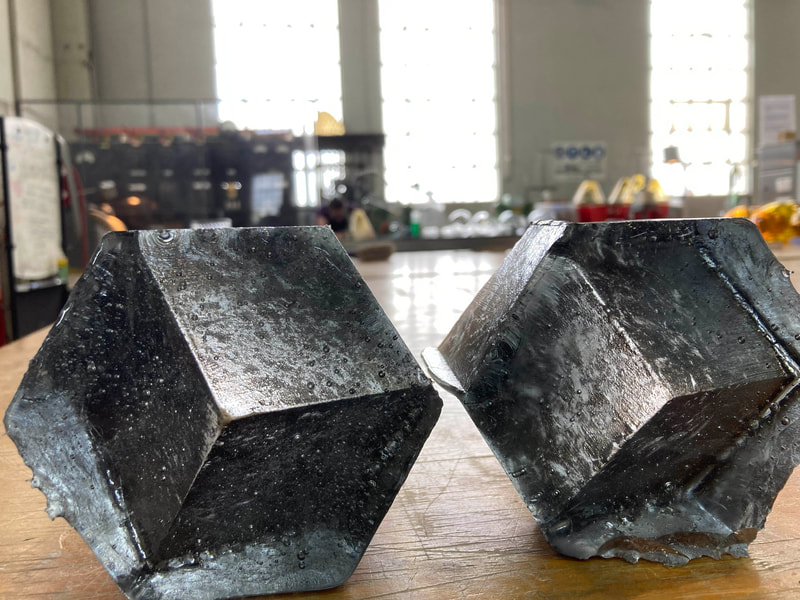|
The preparatory work for this project has laid the groundwork for ongoing developments in using recycled glass. Where glass is diverted from the waste stream. Initially working with the support of ArtAct through their Covid support funding HomeFront grant to develop processes in my home studio. There is a need to develop strategies for the management and processing of waste glass, both window and tv screens. This preparatory work is now being leveraged in ongoing recycled glass projects. This project enabled me to streamline processing tv glass. Where the tv screens were cleaned, removing adhesives and enamels, electrodes, etc. The glass was then heated to 600 degrees, using solar energy in electric kilns, in our home studio. The heated glass was then pulled from the kiln, plunged into a bath of cold water, where the thermal shock fractured the glass into sharp glass lumps of a manageable size. The glass is then processed in a crushing/breaking machine to further break these fractured chunks apart. This crushed material is sieved and graded into 4 different grades. The resulting frit becomes a usable raw material for casting/ remelting and for blowing. The glass is sourced from different manufacturers, in the waste stream. The importance of this fritting and mixing stage is so that different screens are processed to then be MIXED. These smaller granules become a homogenous mass, and when remelted this material has a compatible structure. The glass can be used for casting or blowing. This can be melted in a custom-built furnace, for recycled glass blowing, or pressed glass. Or by using graphite, plaster, and slip cast ceramics to make moulds, to fill these negative forms as open-faced casting moulds. Subsequently I am working in a team at the Canberra Glassworks [through an Australia Council for the Arts, Rise scheme]. Where we are experimenting with scaling up the processing and use of this fritted waste material as a cullet. These ongoing projects are fertile ground for artistic and architectural applications. |
About usIn 2003, Matt and Harry established their studio (affectionately known as Curtistan) in Queanbeyan, New South Wales, where they live with their two sons, Hugo and Oscar and a few furry and feathered friends. Archives
December 2022
Categories |









 RSS Feed
RSS Feed